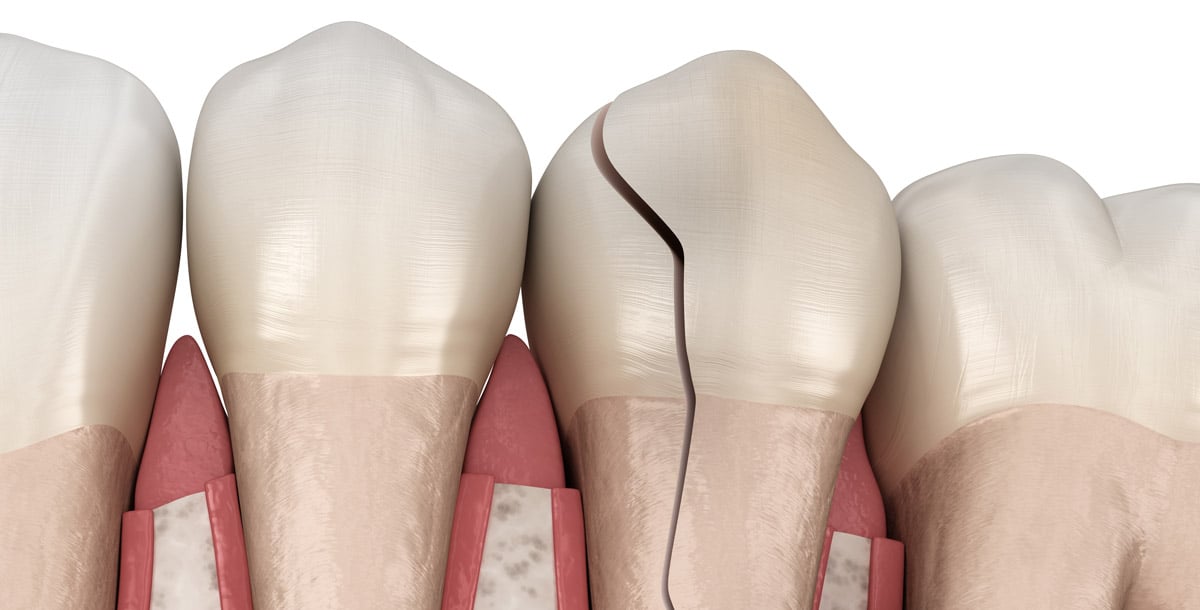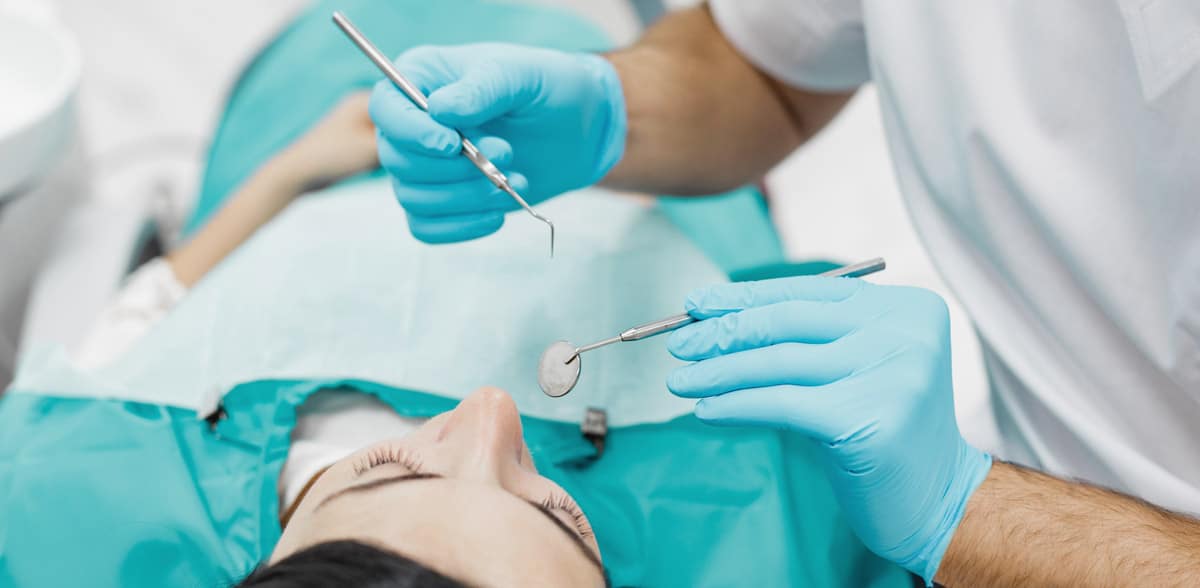How dentists repair cracks in teeth: common restorative procedures explained

Cracks in teeth are a common issue that many people experience throughout their lives. Whether it’s caused by trauma, age, or tooth grinding, the discomfort from a cracked tooth can range from mild sensitivity to intense pain. However, with the right treatment, a cracked tooth can often be saved and restored to its full functionality.
Let’s now take a look at the causes, signs, and common restorative procedures for cracked teeth, giving you insight into how dentists repair these issues and help restore oral health.
What causes cracks in teeth?
Teeth crack for a variety of reasons, and understanding these causes is vital to mitigate risks and find the most effective treatment. Here are the most common causes of cracked teeth:
Physical trauma or injury
A sudden impact, like a fall or a blow to the face, can cause a broken tooth or vertical root fracture. This kind of trauma often leads to visible cracks, or even a split tooth, particularly on the chewing or biting surface. A dental emergency may occur if the crack is deep or severe, as it can compromise the tooth’s integrity.
Teeth grinding (bruxism)
Grinding your teeth, especially during sleep, can put considerable pressure on your teeth. Teeth grinding can also lead to fractured cusps, which typically occur around dental fillings and may not cause immediate pain. Over time, this can lead to tiny cracks, also known as craze lines, or more severe fractures. The continuous stress on adult teeth, especially the back teeth, can result in broken or cracked teeth.
Age-related wear and tear
As we age, our teeth naturally wear down. Age-related wear and tear can lead to craze lines, which are tiny cracks that affect only the outer enamel of the tooth. The outer enamel becomes thinner, making the tooth more susceptible to fractures. This gradual thinning can lead to hairline cracks in teeth, especially in the back teeth where the chewing surface is more prone to damage from biting pressure.
Large fillings or dental work
Teeth that have had large dental fillings or crowns placed are often more vulnerable to cracks, as the integrity of the natural tooth can be compromised. Cracks can extend into the gum line, influencing treatment options and the potential for tooth salvageability.
Signs of a cracked tooth
The symptoms of tooth cracks can vary, but there are several common signs to look out for. Early detection and treatment are crucial to avoid further damage to the affected tooth and prevent the need for tooth extraction or more extensive treatment.
Sharp pain
If you experience sharp, sudden tooth pain when chewing or biting down, it could be due to a cracked tooth. The crack may cause pressure on the tooth’s pulp, irritating the blood vessels and nerves inside, leading to intense discomfort.
Tooth sensitivity
Cracked teeth often lead to heightened sensitivity, especially to hot or cold temperatures. You may notice that your tooth reacts to extreme temperatures or sweet foods, which could indicate a fracture in the outer enamel.
Visible cracks or chips
Sometimes, the crack may be visible to the naked eye, especially if it extends deep into the tooth. A chipped tooth can also be a sign that there’s a more significant fracture beneath the surface.
Discomfort without clear cause
If you experience discomfort without any obvious cause, it may be a sign that your tooth is cracked. The pain may not always be constant, and it might come and go, especially when you apply pressure to the tooth.
When to see a dentist
If you suspect that you have a cracked tooth, it’s essential to see a dentist immediately. Vertical root fractures are a significant type of dental crack that often lacks noticeable symptoms and can lead to infections if not identified during regular dental check-ups. Prompt treatment can help prevent the crack from worsening, leading to tooth loss or the need for more complex procedures like root canal treatment. Early diagnosis can also reduce the chances of the crack extending deeper into the tooth.
If you experience erratic pain, especially after eating hard foods or grinding your teeth, it’s vital to schedule an appointment with your dentist to get a treatment plan tailored to your needs.
Dental bonding: a quick and effective solution
One of the most common ways dentists repair cracked teeth is through dental bonding. This method involves using a plastic resin to fill in and restore the tooth’s structure. Dental bonding is particularly useful for repairing small cracks or chipped teeth, especially in the front teeth.
How dental bonding works:
The dentist will first clean the affected tooth and apply a bonding material to the surface of the crack. The material is then shaped to match the natural contour of your tooth. Once shaped, the resin is hardened using a special light, ensuring that the crack is sealed and the tooth looks as good as new.
Benefits of dental bonding:
- Quick and effective
- Minimal discomfort
- Preserves more of the natural tooth structure
- Cost-effective for small cracks
However, dental bonding may not be suitable for larger cracks or fractures that affect the tooth’s strength or structure.
Fillings: restoring function and appearance
For larger cracks, particularly those affecting the chewing surfaces or biting edges, a dental filling may be necessary. Fillings restore the function of the affected tooth, allowing it to withstand biting pressure once more.
Types of dental fillings:
- Composite fillings: These are made from a resin material that can be colour-matched to your natural teeth. They are ideal for visible cracks in front teeth.
- Amalgam fillings: These are stronger and more durable, making them suitable for back teeth that endure more chewing pressure.
- Ceramic fillings: These fillings are made from porcelain and are resistant to staining, providing a natural look.
Dental fillings are highly effective for treating cracks that only affect the outer enamel or tiny cracks on the biting surface. However, if the crack extends deeper or involves the root of the tooth, a more advanced treatment may be required.
Crowns: for more extensive cracks
If the crack is larger and involves more significant damage to the tooth, a dental crown may be the best option. A dental crown is a cap that covers the entire tooth, providing strength and protecting it from further damage.
Types of crowns:
- Porcelain crowns: Ideal for visible teeth, as they blend well with the natural tooth colour.
- Metal crowns: Strong and durable, typically used for molars where aesthetics are less of a concern.
- Ceramic crowns: Similar to porcelain, but generally stronger and more durable.
The process of placing a crown involves removing the damaged part of the tooth, taking an impression, and then placing a custom-made crown over the remaining tooth structure. This procedure helps restore both the function and appearance of the affected tooth.
Root canal therapy: saving the tooth from vertical root fracture
When the crack extends deep into the tooth and affects the pulp (the innermost part containing nerves and blood vessels), a root canal may be necessary. A root canal treatment removes the infected pulp and fills the empty space, preventing the tooth from becoming further damaged or causing a tooth abscess.
Root canal treatment is usually performed when a cracked tooth causes persistent pain or when the crack reaches the vertical root. During the procedure, the dentist will clean the root canals, remove the damaged tissue, and seal the tooth to prevent further infection.
While a root canal may sound intimidating, it’s an effective way to save a damaged tooth and prevent tooth loss. Following the root canal, a crown is often placed to strengthen the tooth.
Veneers: a cosmetic fix for cracks
For minor cracks, particularly on front teeth, dental veneers can be an excellent solution. Veneers are thin shells made from porcelain or composite material that cover the front surface of the tooth, masking cracks and chips.
The process begins with the dentist preparing the tooth by removing a small amount of enamel to ensure a secure fit.
An impression of the tooth is then taken, and a veneer is created to match the shape and colour of your natural teeth.
Once the veneer is ready, it is carefully bonded to the tooth using a strong adhesive, and a special light is used to harden the material, ensuring a long-lasting and natural-looking result.
Veneers are a cosmetic solution, ideal for those who want to improve the look of cracked or chipped teeth without needing more invasive treatment.
How to care for a cracked tooth after treatment
After treatment for a cracked tooth, it’s important to follow your dentist’s instructions for aftercare. Proper care can prevent complications and help the affected tooth heal effectively.
One important guideline is to avoid biting hard foods while your tooth heals. Hard foods can cause further damage to the affected tooth, so it’s advisable to stick to softer foods and refrain from biting down on the treated tooth for a few days.
Continue to brush and floss regularly, ensuring that the treated area remains clean. Proper care is essential to help the cracked tooth heal effectively. Good oral hygiene helps prevent tooth decay and ensures the longevity of your restorative treatment.
Preventing cracks in teeth
While cracks in teeth are sometimes unavoidable, there are steps you can take to reduce your risk of experiencing this problem in the future.
Avoid biting hard foods: Steer clear of biting hard foods like nuts, ice, or hard candies, as these can cause cracks or chips in your teeth.
Wear a mouth guard: If you grind your teeth at night (bruxism) or play contact sports, a mouth guard can protect your teeth from fractures.
Regular dental check-ups: Visiting your dentist regularly for check-ups ensures that cracks are detected early and treated before they become serious issues.
Get expert help for a fractured tooth at Fulham Road Dental!
Cracks in teeth can be painful and concerning, but with the right treatment, most cracked teeth can be repaired without the need for tooth extraction. Whether through dental bonding, crowns, root canal treatment, or veneers, there are several restorative options available to help protect and restore your natural tooth.
At Fulham Road Dental, our experienced team specialises in restorative dentistry, offering personalised treatments to repair fractured teeth and restore both function and appearance. Whether you need dental bonding, fillings, crowns, or even root canal treatment, we have the expertise and advanced technology to help you regain your smile and maintain optimal oral health.
Don’t delay – get expert help for your fractured tooth at Fulham Road Dental and ensure the long-term health of your teeth!





